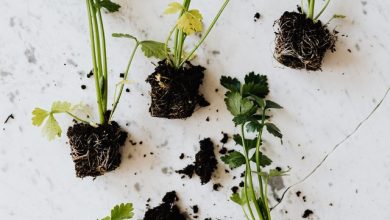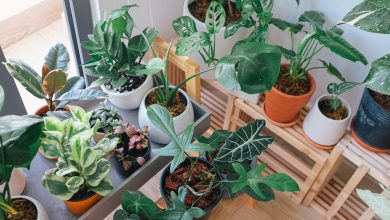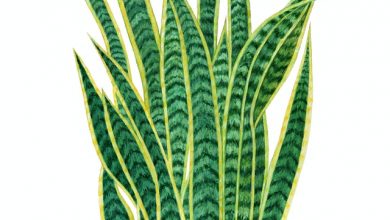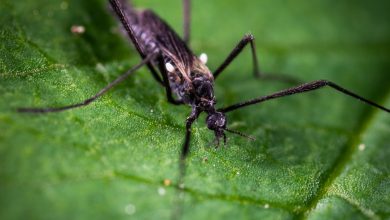How to Create an Eco-Friendly Garden
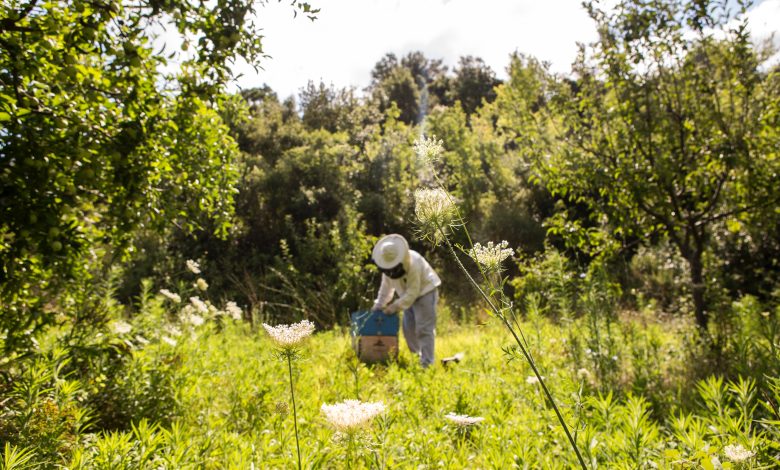
It’s always a gift to be able to grow a beautiful garden, but did you know that you can help the earth while you do it? Being conscious about your gardening choices can do the earth a lot of good, and the practices are super easy to implement. In this day and age, the planet could use all the help it can get, so why not dedicate your gorgeous space to make the planet a better place?
The following tips will help you create an eco-friendly garden right in your own backyard. We promise it’s completely worth it.
Water-Wise Gardens
One of the elements we take for granted the most is our water supply. Even though most of the planet is comprised of water, very little of it is actually clean enough to consume.
Water consumption is a huge part of the planet’s ongoing issues; it is important that those of us with a large supply of the source are smart and responsible when it comes to our intake. Aside from all of the things you can do inside your home to lower your consumption, there are also things you can do in your garden to lower water-usage, namely rain barrels, drought-savvy plants, irrigation systems, and rain gardens.

Rain Barrels
Rain barrels are a savior when there are droughts. All you need is a small surface area where you can place the rain barrel and let it get to work. You can use this rain water storage for watering your plants or even taking showers!
With this kind of purchase, you’ll be able to avoid over-watering with the hose, and your water bills just might go down as well. For the price you pay up front, this kind of garden ornament just keeps on giving.
Drought–Savvy Plants
Watering an eco-friendly garden with rain barrels is great, but if you have plants that are happy in droughts, that’s even better! To lower the amount of water you need to keep your garden alive, consider shopping for plants that don’t require a lot of water intake. This way, your plants can flourish during drier days, and take what they need when rainfall finally comes. Some drought-tolerant plants you might consider planting include:
Hens and chicks: These plants are low-lying, but sometimes they will surprise you with high stems and interesting blooms. They keep water in their thick leaves, so they can provide their own source of water if the weather remains dry. These comes in all shapes and colors so you can decorate your garden as you like, and plant them basically anywhere!
Smokebush: This plant ranges from light pink to dark purples, and can become very vibrant come the fall. You can shape the plant to be a more low-lying bush or allow it to flourish into a taller tree formation. Smokebush will last through the tough winters and bloom for quite a few years, so it’s ideal in many locations.
Lavender: Lavender is a gorgeous, purple-blue plant that can tolerate dry weather without wilting. It comes in a range of sizes and colors, and is easily accessible across North America.
Sedums: Aside from being drought-tolerant plants, sedums are very hearty and will last all summer long until the frost comes. Additionally, sedum is a very attractive plant for bees and butterflies, which means you’ll also be supplying our pollinators with nectar.
Irrigation Systems
Your location will be the deciding factor in whether you want water to run towards your garden or away from it. Gardens in desert-type climates usually have drought-resistant plants, but they shape the land in order to bring water towards these gardens.
If you’re using an irrigation system in your garden, plan to install rain sensors as well. You wouldn’t want to be running your water system when it’s not even necessary! Additionally, keep an eye on your watering to make sure that the water is hitting the right areas and not wasting away on driveways or drowned areas.
An eco-friendly garden will have plants that don’t require constant watering. To grow stronger, tougher plants that can handle drier weather, remember to water deeply and less often. Plants that are used to frequent, short watering will grow weak roots that will struggle with drought. As a result, you’ll likely water more.
Rain Gardens
Aside from implementing rain barrels, you might also consider building a rain garden, if you have the space for it. These spaces help to gather and filter runoff water from roofs, walkways, yards, and parking lots.
These systems stop dirty water that is often filled with chemicals and pesticides from traveling back into our natural water resources. The dirty water flows into the rain garden and is slowly filtered and released back into the surrounding soil.
You’ll need to find a location on your property that can absorb lots of water, and from there you can begin to plan your garden. This might take the hands of a few people, especially those with digging tools, trench expertise, and plant knowledge.
It is a bit of a project, but this is a very beneficial component of creating an eco-friendly garden.

Garden Furniture
Who doesn’t love to sit in their garden and enjoy all of their hard work? We’re all for admiring a beautiful space, but it’s the outdoor furniture we’re sitting on that some people aren’t thinking about.
A lot of the most common pieces of outdoor furniture are made from plastics and leathers, which are two of the most managing materials for our environment! Not only is real leather made from animals, but the waste products that come from leather production leave a strain on the environment.
Plastics, on the other hand, are non-biodegradable. They can sit in the ground or float in water for thousands of years, contaminating the soil and never breaking down. To create an eco-friendly garden, consider what kind of furniture you’ll purchase the next time you need new pieces, as there are several types of more eco-friendly garden furniture.
Restored Pieces
First and foremost, we should always try to reuse and recycle as much as possible. If you already have garden furniture, consider repairing these pieces instead of buying new ones. This way, you save old furniture from sitting at the dump.
If you’ve got dirty or rusted furniture, create some homemade cleaners to make them shine again. Even soaking furniture in a mixture of warm water and cleaning vinegar can do wonders!
If you have old wooden furniture, simply give it a good wipe-down and treat it with a wood varnish that is free of chemicals and emissions.
Recycled Pieces
If your furniture is beyond repair, you might be forced to find some new pieces. If you don’t mind second-hand items, the first place we’d suggest looking is your local thrift store. Try to start searching in the colder months so that you have a better chance of seeing more options.
If you haven’t found anything there, consider checking out buy and sell apps. People are often selling really great items at a fraction of their cost, and you might luck out!
If you have to buy new, it’s ideal to choose furniture that is made from recycled materials or which is made from materials that can be recycled after their use. These include aluminum and rattan. Materials that can be recycled and which are longer-lasting will stop you from dropping furniture at the dump.
If your new furniture is going to be made from wood, consider wood that is recycled from other projects or which is sustainably sourced. Head into a few different stores and learn about their process before deciding who is the most eco-friendly.

Chemical-Free Garden
It’s common knowledge that pesticides are one of the main causes of our pollinators’ decline. Butterflies and bees play a huge roll in pollinating our world and allowing us to enjoy some of nature’s most delicious foods.
Unfortunately, the use of pesticides is killing off these animals in alarming numbers. If we’re going to see these beautiful creatures for centuries to come, we need to make smarter decisions about our chemical use.
The first thing you can do to create an eco-friendly garden is ban all use of chemicals. Yes, even if you have pesky creatures eating your plants! There are natural ways of replacing these terrible liquids, and they’re simple to implement.
Aphids: If you have aphids, simply wrap some aluminum foil around the base of your plant. The reflection of the sun will shine up onto the underside of leaves and scare aphids away. Similarly, plant things they don’t enjoy, such as cilantro, mint, and basil.
Ants: Even though it seems like ants will attack and eat anything and everything, they’re actually quite picky. Instead of using a harmful ant spray, try laying any of these things around the base of your home to stop them from entering: coffee grinds, cinnamon sticks, cloves, paprika, or lemon juice and lemon rinds.
Grasshoppers: If you’ve got an abundance of grasshoppers overrunning your garden, you’ve got an easy answer. Spray garlic oil in areas where you want grasshoppers to steer clear and plant cilantro.
Spider Mites: Spider mites dislike coriander or dill, so plant those where you see the mites most. Additionally, using rye or wheat mulch will deter them as well.
Slugs: Slugs have a range of plants that they don’t like to go near, including lemon and mint. If you’re having trouble keeping them away, consider gathering hair from the brushes in your bathroom and placing that around your garden. The hair will stick and make them uncomfortable.
Weeds: Pesky weeds might bother you, but overloading on weed killers isn’t the way to go in an eco-friendly garden. Instead, consider using vinegar. A house-cleaning vinegar will work best on small, less established weeds. For heartier weeds, consider a stronger solution available at home hardware stores. Keep in mind, vinegar will kill both weeds and plants, so be very meticulous about where you spray. Of course, the best way to rid your garden of weeds is the old-school approach of using your hands and avoiding all liquids in general.
If some of the plants mentioned are inaccessible to you, you can also implement essential oils of similar smells. Scents like lavender, lemon, and mint can be smelled from far away and will deter these pests from ever approaching.

Eco-Friendly Food
A lot of the harmful pesticides that are used around the world are used on the foods we will eventually consume. Even though pesticides seem to help farmers make bigger, stronger foods, we’re only putting these chemicals into our bodies, and into the planet.
Food consumption is a huge part of the problem on our planet. In fact, meat-eating in itself is one of the biggest environmental destructors on the planet. Every step, from clearing the land, feeding and raising the animals, to transporting those animals, is another huge step in our ecological footprint.
So, what can you do in your eco-friendly garden?
Grow Your Own Food
One of the best ways to create an eco-friendly garden is to start growing your own food! This doesn’t have to be an overwhelming process; lots of vegetables will take quite easily, and you’ll be surprised at your earth-friendly harvest.
Growing your own food helps you to cut down on the emissions that are created from the farming, refrigeration, and transportation of grocery store foods. Some of the simpler produce you can rely to grow quite well include: kale, apples, peppers, tomatoes, and perennial berry plants.
Practice Organic Gardening
Before pesticides and man-made chemicals came along, pretty much every garden could have been considered “organic.” Essentially, a gardener can boast about an organic garden if they do not use any kind of chemical whatsoever in their gardening endeavors.
The ecosystem in your garden is a very fragile thing, and even using a tiny bit of pesticide spray on a single weed can have ramifications for the rest of the garden. Without knowing it, you’re already increasing the chances of contaminating your plants, the foods you’ll eat, and the creatures who come and go.
Going organic means a few things:
- Your food is healthy and safe for consumption.
- You can supply pollinators and other animals with safe shelter and food.
- You avoid the issue of bringing chemicals into your home.
- Native plants can grow, thus attracting local animals that seek them out.
- You are supporting a healthy ecosystem and biodiversity that can grow the way it was meant to.
If you want to create an eco-friendly garden, it all starts with your soil. The natural soil you find on your property is already chalk-full of microorganisms. By going organic, you can encourage these important organisms to grow and flourish.
In addition, it’s helpful to grow plants that are native to the area. If you’re trying to grow plants that aren’t suited to your location and climate, chances are, you’re going to be persuaded to use non-organic means to make growth happen more quickly.
When you remove food or plants from your garden, you’ll need to add new supply to the garden. The best way to do this is to collect natural compost in your yard and feed that to your garden when necessary. Toss in any of the leaves you’ve shredded from the past autumn, as well as the foods that have broken down through the winter and spring. Organic plant food is also an option.
Choose the Right Seeds
An eco-friendly garden isn’t built in a day; you’ll need to make conscious decisions and purchases that support your greener approach. One of the simplest things to practice is buying untreated, non-GMO plants and seeds.
Fortunately, growing an eco-friendly garden isn’t quite as uncommon as it used to be. With more people trying to go green, there are lots of seed companies taking pledges to provide safer, greener supplies.
It might be more difficult to find eco-friendly plant seeds; call around to your local nurseries and try to find plant sales that are grown in strictly organic gardens. If your nursery doesn’t have them, local farmers might know where to go.

Attract All the Pollinators You Can
Of course, every eco-friendly garden is a friend of the pollinators. Bees and butterflies are two of our most precious pollinators, but their numbers have been dropping drastically due to habitat loss, climate change, and pesticide use.
To help them recuperate, it is essential that we plant all of their favorite things in our gardens. This way, they’ll be able to support their eggs and hives, and they’ll have enough resources to make it through the winter.
Try to mix up the plants in your garden; Go for different colors, shapes, and sizes to give the pollinators lots of choices.
Bees: Some of the best flowers to plant for bees include: Cosmos, sedums, aster, sunflowers, lavender, mint, rosemary, and thyme. You might also consider building a ‘bee apartment’ for native bees, as a means of shelter for them.
Butterflies: The best flowers to plant for butterflies include: butterfly bush, aster, starflowers, and zinnia. Monarch butterflies require variations of milkweed for their eggs and larvae, and other butterflies will use a variety of plants or trees. Some of these trees include: willows, cheery trees, plum trees, oak trees, elms, poplars, and sycamores.
Conscious Gardening
Working to build an eco-friendly garden isn’t easy, but making the changes necessary is so important to helping out our planet! Even if we implement a few of these tips, we could be making a much bigger difference.
